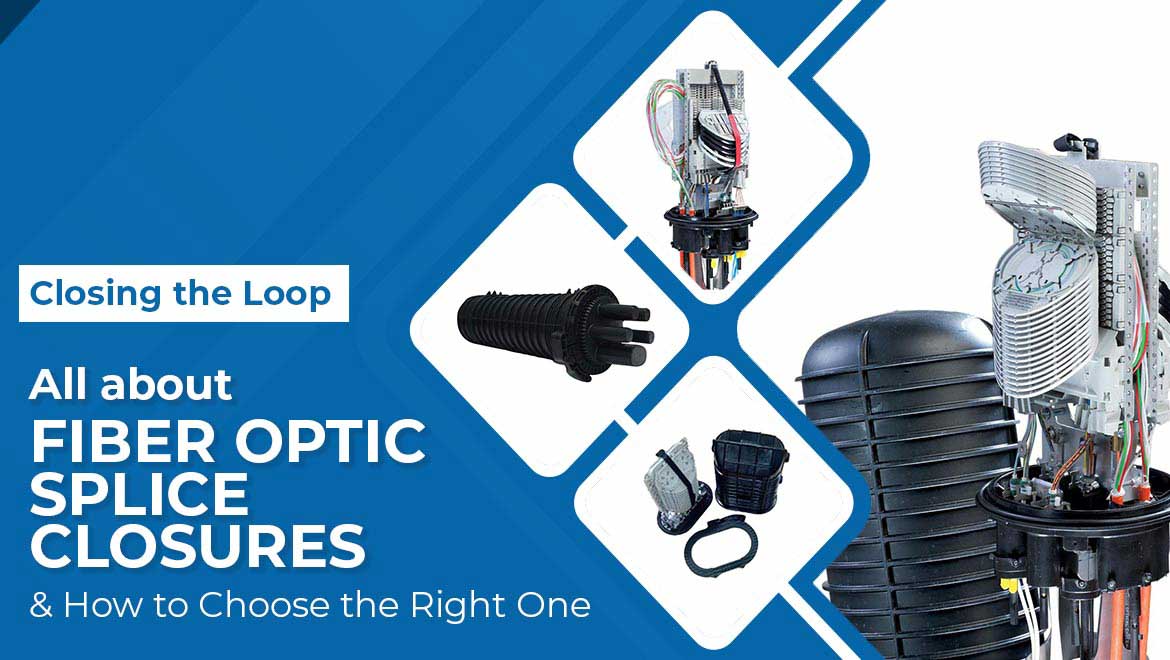Fiber optic cables have impressive connectivity – they can be run underground, over aerial wires, and even beneath the oceans. They are exposed to some of the harshest environments on the planet – rocky, dry, wet, snowy, dusty, cold, and hot.
All these cables have hair-thin fibers and need to be spliced. So, how do these tiny fragile spliced fibers withstand the harsh realities of Mother Nature? This is where, fiber optic splice closures come into the picture.
A splice closure is a small box made up of hardy plastic and covers the sensitive parts of the cable, protecting it from the external elements. Fiber optic splice closures play a crucial role in the strength of the fiber-optic network. In this guide, you can learn all about this protective element – what it does, types and how you can choose the right one while setting up a fiber optic network.
What is a fiber optic splice closure?
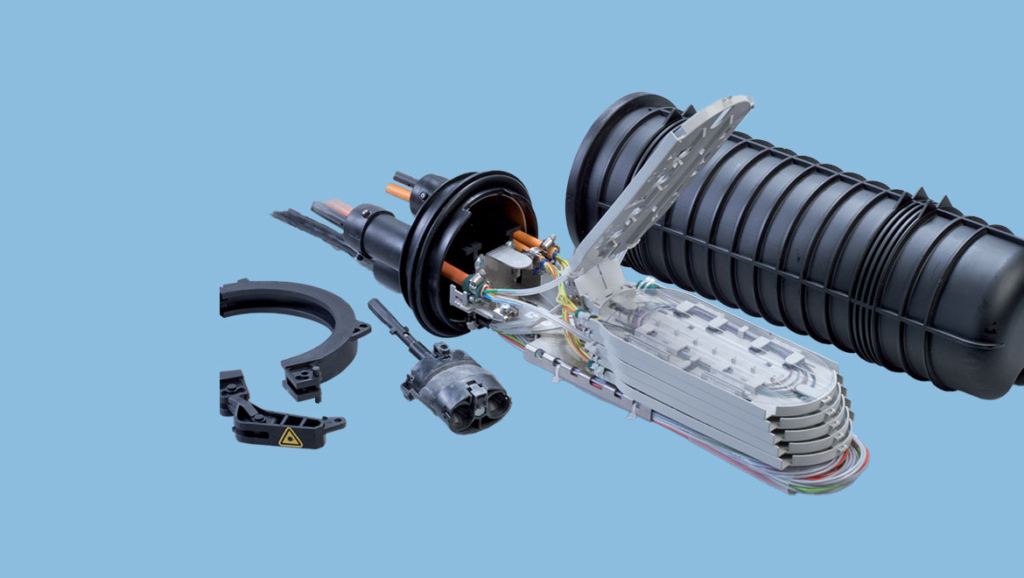
Fiber optic cables are spliced while setting up the network. These sensitive fibers have to be protected from the environment – extreme temperatures, insects, critters, moisture, and pressure. A fiber optic splice closure is a small plastic box that protects the fiber cable inside.
While choosing fiber optic splice closures, you have to look for components that meet all these conditions:
- It should be durable – Last for years, without damages.
- It should be resistant to pressure – The box should be resistant to compaction and external pressure.
- It should be waterproof – So that it keeps the cables inside free from moisture.
- It should effectively seal the cable – To keep it protected from dirt, dust and other particles that can prevent the functioning of the cable.
- It should be versatile – To protect different fibers and handle different placements.
Fiber optic splice enclosures are available in a wide variety of types, depending on where it will be placed. Generally, they are made from rugged plastic or sometimes even stainless steel.
Two Major Types of Fiber Optic Closures
Fiber optic closures are of two main types. They are:
1. Vertical Fiber Optic Closure
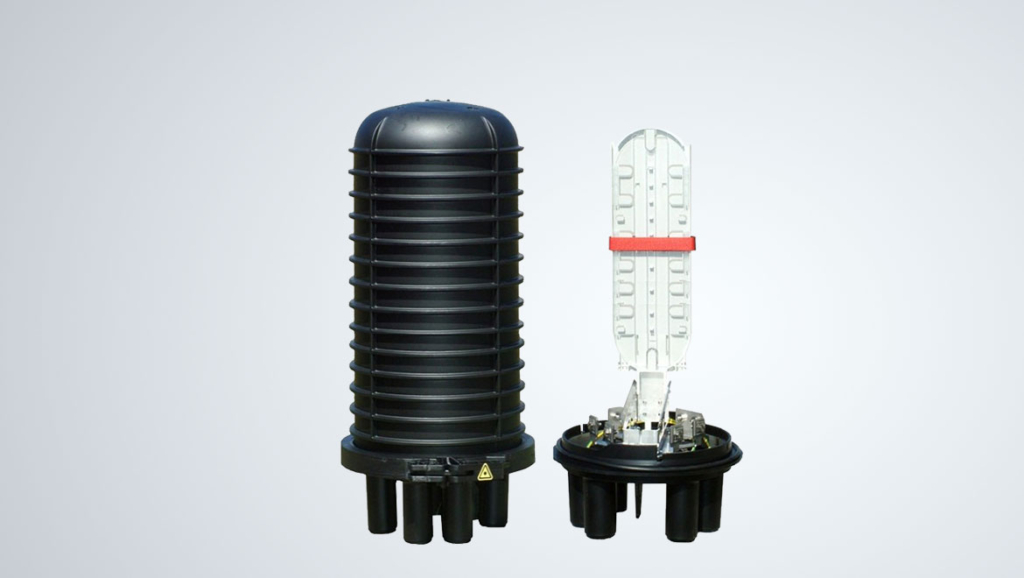
This is the most common and preferred type of splice closure. It has a distinct dome shape and is primarily designed for underground applications. The vertical dome fiber optic closure is also available in different configurations and capacities. It also has varying inlet and outlet ports to meet varying cable capacities.
2. Horizontal Fiber Optic Closure
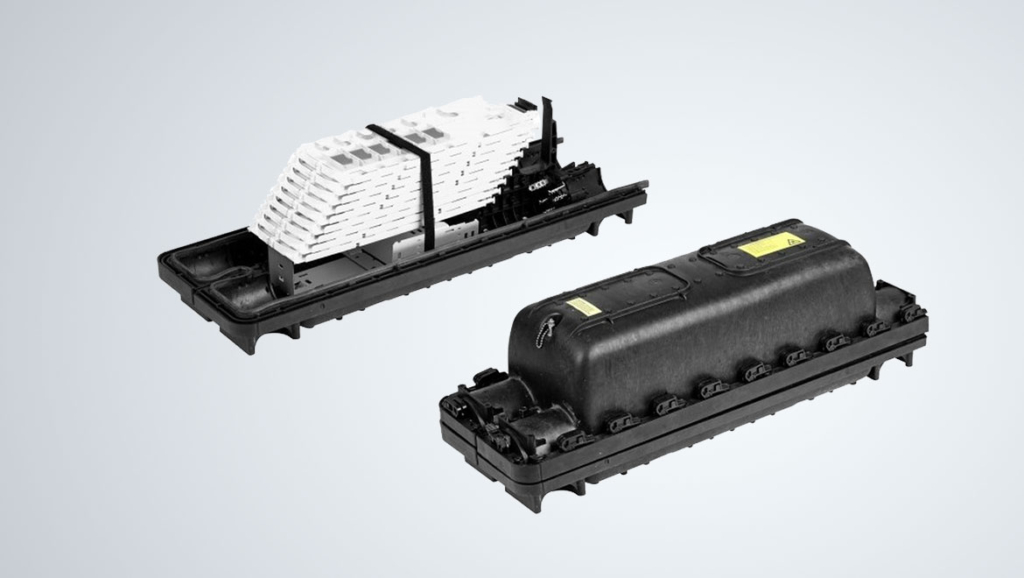
It’s versatile and is flat or cylindrical in shape. It can be buried underground or mounted aerially as per requirements. Just like dome-type fiber optic closures, A horizontal splice closure can have various capacities. A horizontal closure with a higher capacity can fit more cables, compared to one with a lower capacity.
How to choose the right fiber optic closure?
With different splice closures available in the market, choosing the right one is a challenge. There are several factors to consider while making your decision.
I. Cable Compatibility

This one is obvious. The splice closure you choose must be compatible with the cables you use in your network. Make sure to double-check the compatibility of the cable and the closure. Alternatively, you can go for universal designs that work with all cables.
II. Entrance Capacity

The entrance capacity refers to the number of cable ports in the fiber optic closure. The number of ports determine the capacity of the network. Besides the number of ports, check the size of the ports as well.
III. Termination System
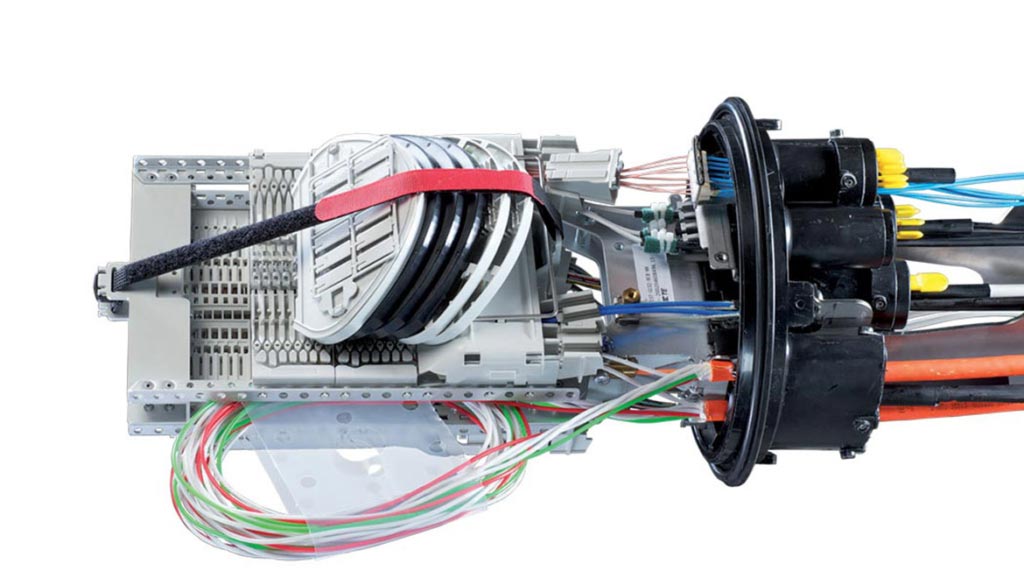
The point of connection between the cable and the closure must be made of materials that can withstand the effects of motion. Generally, fiber optic coatings are made with UV-resistible resins that can withstand thermal expansion and contraction. The closure must be able to handle the changes without damaging the sensitive cables within.
IV. Splice Type
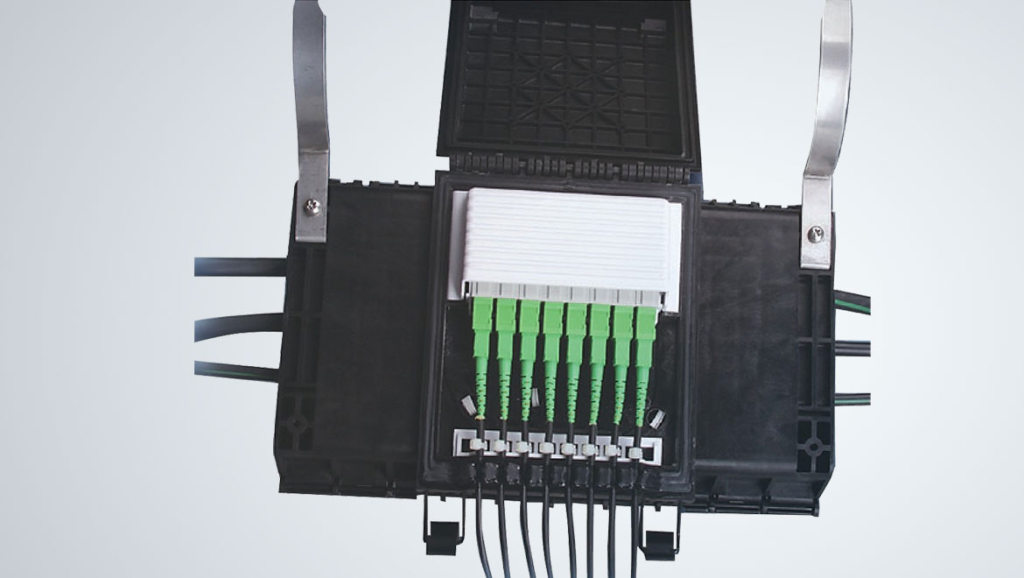
The splice tray in the closure can handle only fewer cables if the cables aren’t fusion-spliced. Similarly, mechanical or ribbon splices can also reduce the capacity within the closure trays, since they are larger. So, while choosing the splice closure look for a configuration that helps to improve cable performance without twisting or stressing the cables.
V. Closure Placement
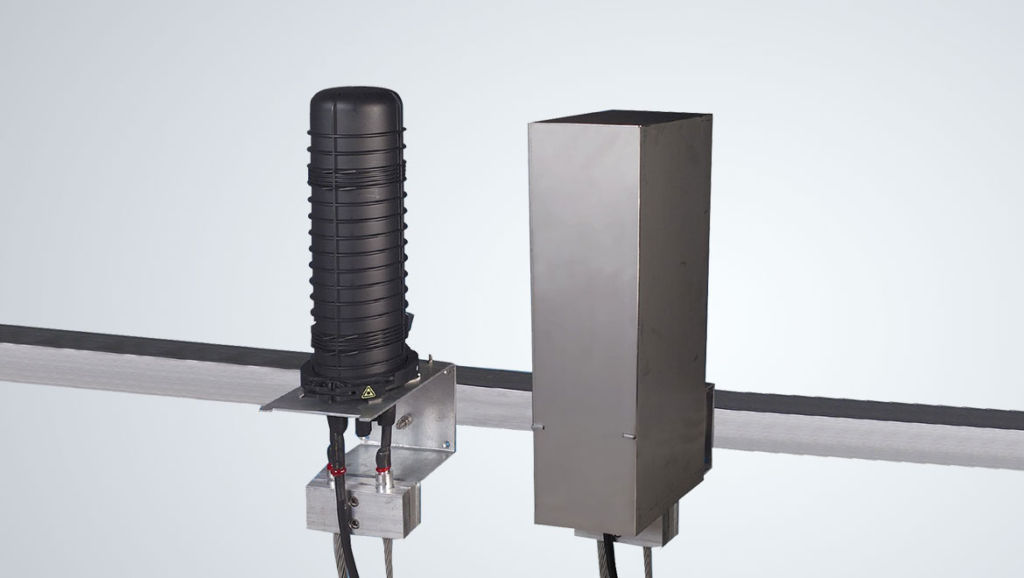
This is a key factor that will help you decide the type of closure. For example, if the closure will be situated aerially, then you’ll need to ensure that it can resist aerial environmental hazards. Additionally, the tools used to mount the closure like a messenger wire also has to resist these environmental hazards as well.
VI. Cable Management
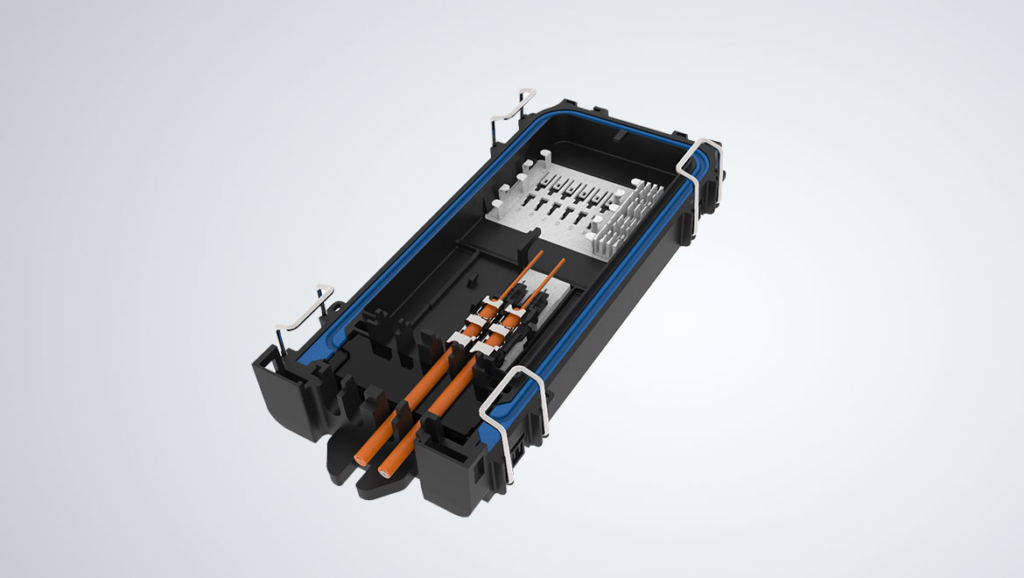
Another major concern is that the cable should feel stressed or twisted when it’s housed within the closure, as stressed cable impedes performance. Look for a splice closure that can support cable management without tight bends. Closures that offer easy installation can help in eliminating extra damage or stress to the cable.
VII. Accessibility

Some splice closures are easier to access when compared to others. Depending on where in the network you install the closure, you may require accessibility or not. For example, closures at the start of the network distribution system do not require repeated access. So, a long-lasting durable closure that doesn’t have to be checked regularly is the best choice.
On the other hand, at the drop lines, you require multiple re-entries. In this stage, look for fiber optic closures that provide easy accessibility. Another factor to consider here is keeping out unauthorized users. If this is a concern, then look for closures with locks in them.
Make sure to consider these seven factors to help you find the best fiber optic closures for your next project.
Splice Closure from Adishwar Tele Networks
Finding the right splice closure for your network can be a huge challenge. To help you, Adishwar has a huge array of fiber optic splice closures in a variety of styles and customisation options from 3M, Commscope and Corning. Whether you’re looking for a splice closure to make changes to an existing configuration or change the mounting style of the cable, we can help. Get in touch with our team to find the perfect splice closure for your project needs.

